Reader questions: When were school uniforms introduced?
- Published
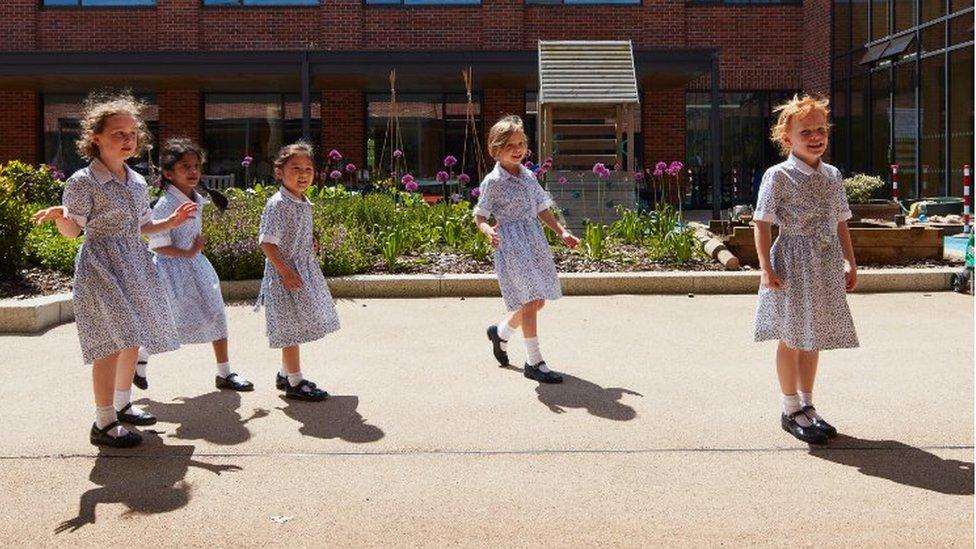
About 90% of schools in England have a uniform
As children return to school after the summer holidays, we asked BBC readers for their questions about going back into the classroom.
When was school uniform introduced and why?
Christ's Hospital in London introduced the precursor to today's uniform when it was founded in 1552 to educate and support fatherless and poor children.
The blue coats and breeches and yellow socks are still worn by students today - the pupils voted to keep the outfit in 2010.
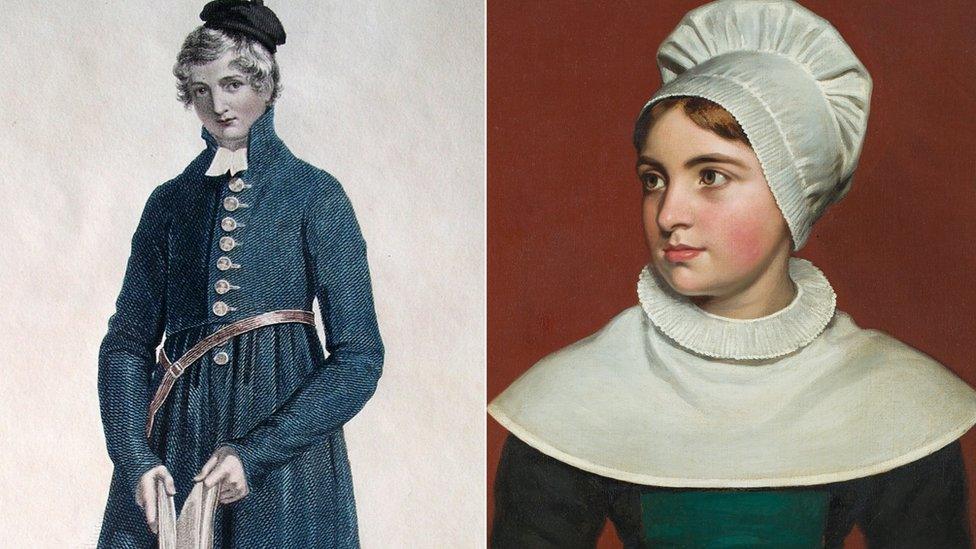
Christ's Hospital introduced a uniform in Tudor times
The only choice students have is their shoes and since 1987 the majority have opted for Dr Martens according to the school's website, external.
School uniform did not become more widely used until the 19th Century when Eton College introduced the Eton suit in about 1820, claims fashion historian Jayne Shrimpton, external.
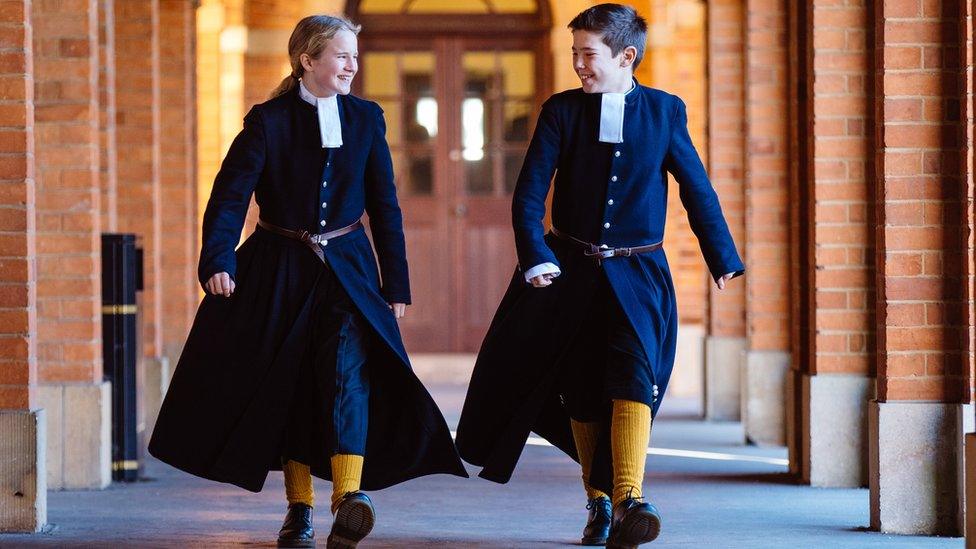
Christ's Hospital students wear the same uniform that was introduced when it was founded in 1522
The suit, which had to be worn by boys under 5ft 4in (1.6m) tall, comprised a dark jacket, grey trousers and top hat.
Other schools followed suit, although it was not until the 1920s that uniforms became compulsory for girls - usually based around the gymslips they had worn for sport.
Prior to that, the only type of uniform they had was their sports kit, as bodices and long skirts were impractical for athletic endeavours.
After World War One, shorts became more popular for younger boys although when they reached a certain height they were expected to move into long trousers, and most wore blazers and caps.
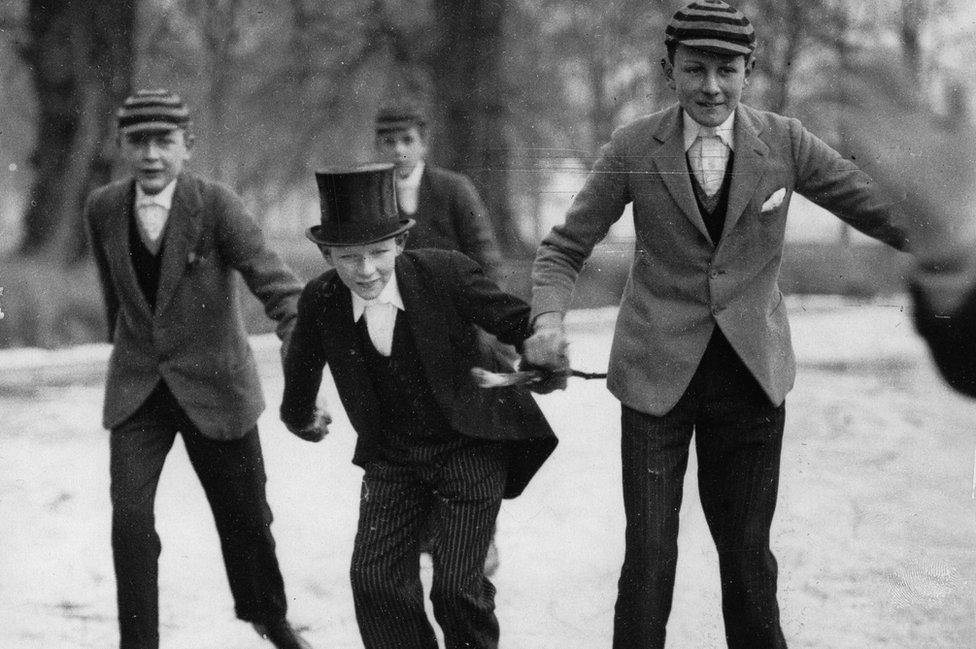
Eton College students had to wear top hats while other schools adopted caps
Strict dress codes began to be relaxed in the 1970s with formal wear replaced by polo-shirts and sweaters, although some schools have reintroduced blazers in recent years (and some never lost them in the first place).
About 90% of English schools currently have a uniform and while the government recommends having one, external it is up to each governing body to choose.
Those in favour of uniform say it promotes high scholarly standards, pride and equality among pupils, and means the less well off are not marked out by their lack of labels and brands.
Opponents say it stifles individuality and the enforced cost can be prohibitive, with a uniform costing an average of about £213.
The government says cost should be considered by a school and cheaper suppliers allowed.
Why do schools have 13 weeks holiday per year?
As with uniform, it is up to governing bodies and academy trusts to decide when schools go on holiday and exactly how much holiday to offer.
They tend to have 13 weeks split across six periods - summer, Christmas and Easter, and half terms in October, February and May.
Holidays were traditionally fixed around the farming calendar with children released from school to help with harvests over the summer, after which the new school year started.
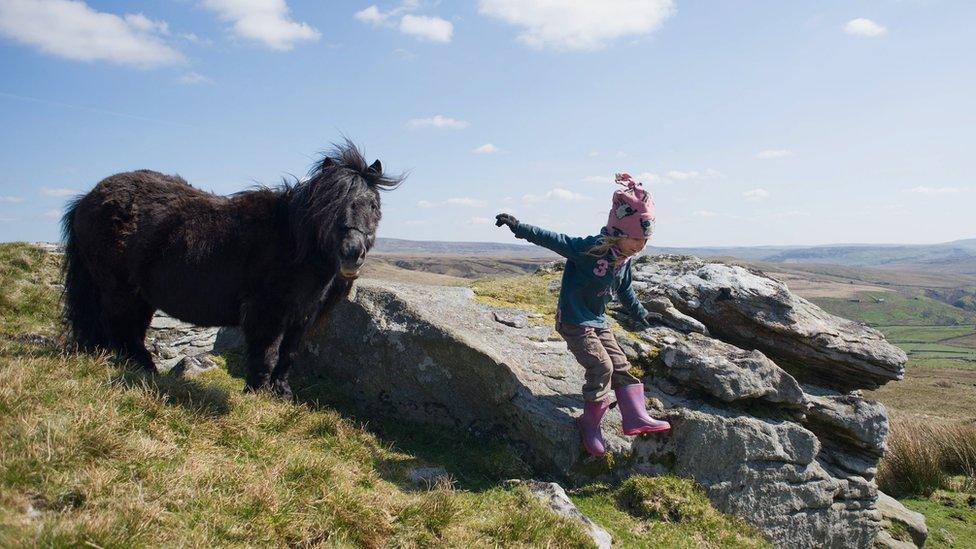
Children were traditionally given the summer months off so they could help on family farms
For example, in Durham holidays are set by the county council.
A spokeswoman for the authority said while the long summer holiday remains between July and September, exact dates are set by the authority in consultation with other North East councils.
"This is to ensure that, as far as is possible, areas have the same holidays, making it easier for families who may live in one area but whose children attend schools in another to arrange childcare," the spokeswoman said.
The council also consults with teaching and non-teaching trade unions as school staff "have set working days and holiday entitlements".
The government has a webpage to direct parents and pupils to their local school providers, external.
- Published2 September 2019

- Published13 August 2019

- Published23 August 2019
